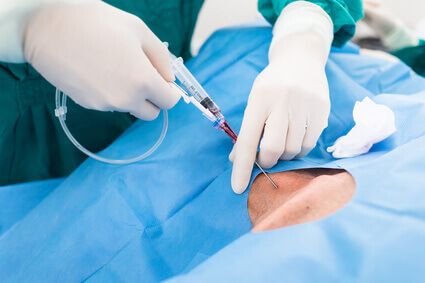The presence of cardiogenic shock (CS) in a setting of aortic stenosis ranges from 1% to 4%. The prognosis for this scenario is ominous due to subendocardial ischemia, which presents as a decrease in ventricular preload and an increase in afterload. Aortic valvuloplasty has been used in this context, but, unfortunately, it has been associated with high mortality—between 30% and 50%, or even higher—30 days after the procedure. In addition, traditional surgery has a bleak prognosis.

Transcatheter aortic valve replacement (TAVR) has emerged as an alternative in this situation. However, the information available is limited and many procedures have been conducted with first-generation valves, often by operators with low experience.
In an analysis of 309,505 patients undergoing TAVR with SAPIEN 3 or SAPIEN 3 ULTRA (S3U) valves between 2015 and 2022, 5006 of them (1.61%) had cardiogenic shock (CS).
The primary endpoint (PEP) was defined as mortality over several years of follow-up.
Patient groups showed differences: those with CS were older and the number of women among them was lower. That group also had a higher Society of Thoracic Surgeons (STS) score, a higher burden of comorbidities, and more cases of prior pacemaker implantation, endocarditis, bicuspid valve, and Valve in Valve (V-in-V) procedure; lower aortic gradient, and higher aortic, mitral, and tricuspid regurgitation.
S3U valves were used in one third of the cases, and most procedures were performed via transfemoral access.
Read also: Impella in High Risk Coronary Angioplasty before TAVR.
Propensity score matching was conducted to correct differences between the groups, resulting in a group of 4952 patients in each category.
At 30 days, mortality was significantly higher in patients with CS (9.9% vs. 2.7%; odds ratio [OR], 3.64, 95% confidence interval [CI], 3.02–4.39; P < 0.0001), and they also had higher rates of cardiac death, stroke, transient ischemic attack (TIA), new dialysis, life-threatening bleeding, vascular complications, and new atrial fibrillation. However, no differences were identified regarding the need for permanent pacemaker, crossover to surgery, coronary compression or obstruction, heart attack, embolization, coronary dissection, or valve ring rupture.
The PEP, which focused on mortality, turned out to be higher in the CS patient group (29.7% vs. 22.6%; hazard ratio [HR], 1.57; 95% CI 1.43–1.72; P < 0.001), and the same applied to the rates of stroke, life-threatening bleeding, dialysis, atrial fibrillation, and major vascular complications.
However, after the first 30 days, mortality rates equalized between the two groups.
Read also: Acute Pulmonary Thromboembolism: When Anticoagulation Alone May Not Be Enough.
At the one-year follow-up, there were no significant differences regarding functional class and quality of life.
The identified predictors of 30-day mortality included age, low aortic gradient, low albumin levels, quality of life, presence of a previous permanent pacemaker, worsening renal function, peripheral vascular disease, and use of ventricular assist devices. At 12 months, the predictors of mortality were age, presence of an implantable defibrillator, worsening renal function, and immunosuppression.
It should be noted that patients with CS showed an improvement in ventricular function at 30 days and at one year.
Conclusion
This extensive observational “real-world” study proves that TAVR is a safe and effective option in the treatment of aortic stenosis in patients with cardiogenic shock. Those who survive beyond 30 days after TAVR have mortality rates similar to that of patients who did not experience cardiogenic shock.

Dr. Carlos Fava.
Member of the Editorial Board of SOLACI.org.
Original Title: Outcomes of transcatheter aortic valve replacement in patients with cardiogenic shock.
Reference: Kashish Goel , et al. European Heart Journal (2023) 44, 3181–3195.
Subscribe to our weekly newsletter
Get the latest scientific articles on interventional cardiology





